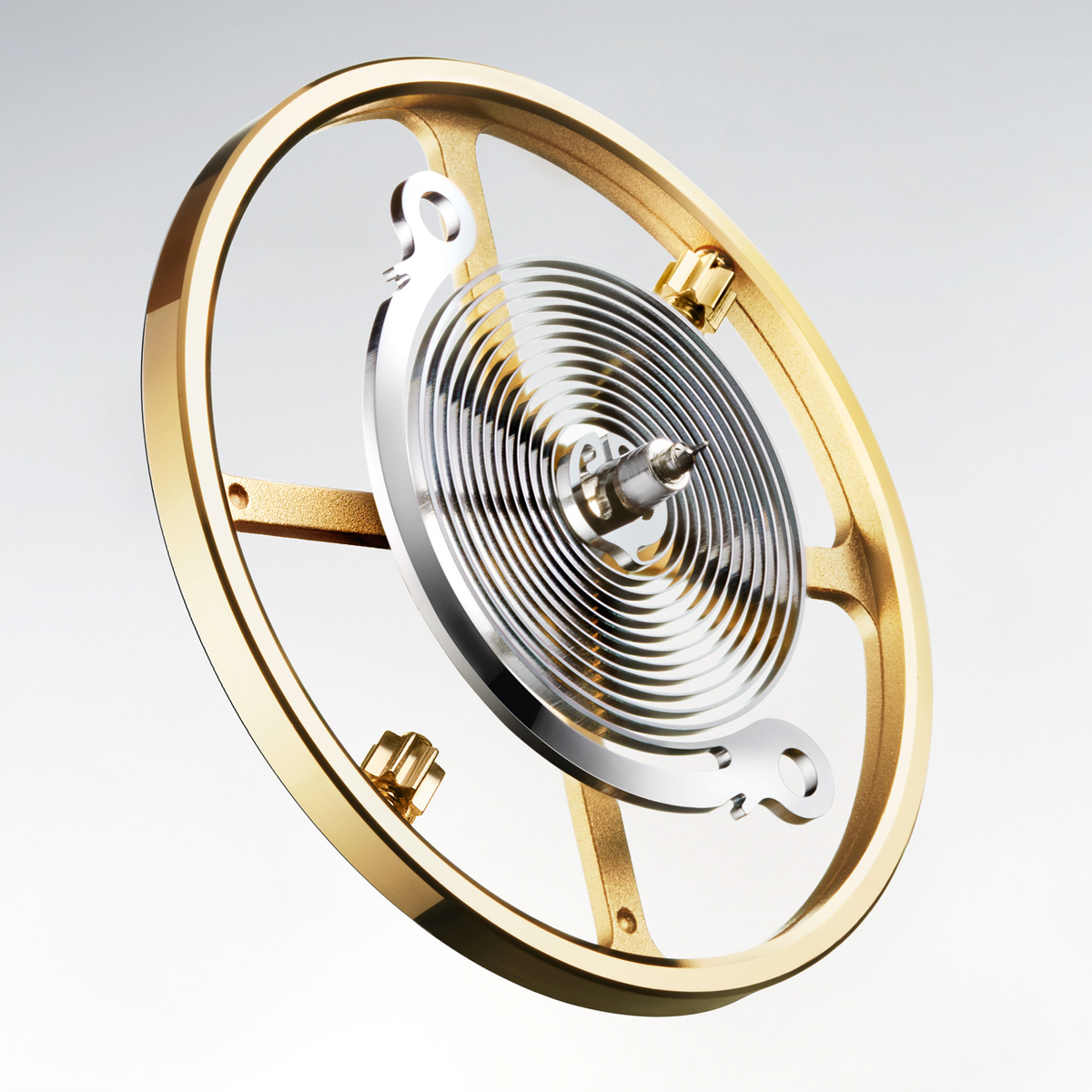Why engineers are leading the battle of the balance spring. Why engineers are leading the battle of the balance spring. Why engineers are leading the battle of the balance spring. Why engineers are leading the battle of the balance spring. Why engineers are leading the battle of the balance spring
Why engineers are leading the battle of the balance spring. Why engineers are leading the battle of the balance spring. Why engineers are leading the battle of the balance spring. Why engineers are leading the battle of the balance spring
14 October 2019
Why engineers are leading the battle of the balance spring
When all balance springs were metal, Swatch Group's Nivarox enjoyed a virtual monopoly. The most widespread alternative, patented silicon technology, is also the property of a handful of manufacturers. However crucial it may be, mechanically and strategically, the balance spring is about materials science, not horological genius.
Ever since Christiaan Huygens invented the balance spring in 1675, its history has evolved alongside progress in watchmaking technology. This tiny spring, which plays a critical role in regulating timepieces, has come under constant scrutiny, especially since modern machining techniques have enabled giant leaps in production and, by extension, movement precision. Advances in metallurgy have also played their part, as innovative alloys have led to greatly improved thermal expansion coefficients (for years, temperature change was the balance spring's worst enemy).
The development of Invar (iron, nickel), then Elinvar (iron, nickel, bromine, tungsten) and finally, in 1933, Nivarox (Nicht Variable Oxydfest or non-varying non-oxidizing, a mix of iron, nickel, cobalt, chromium, titanium and beryllium) sealed the deal for balance springs, and for a very long time. Particularly as one Swiss company - Nivarox-Far, owned by SMH, now Swatch Group - was the only manufacturer, in the wake of the quartz crisis, still capable of producing these strategic micro-components, from alloys manufactured in Germany. It had the capabilities, watchmakers were guaranteed supplies, and so it was that by the early 1980s, Nivarox was sitting on a virtual monopoly, delivering balance springs to the entire Swiss watch industry. And so it might have continued, until the mechanical watch revival of the early 2000s alerted brands to the dangers of this dependency.
For many, silicon brought watchmaking into the twenty-first century.
Panic on board!
Manufacturers realised the advantages to be gained from finding an alternative to Nivarox, the most obvious course of action being to develop the necessary competencies in-house – even at a loss, given the high volumes required for this to be cost-effective. No matter. Brands such as Bovet, Precision Engineering (H. Moser & Cie.), Atokalpa (Vaucher Manufacture/Parmigiani), A. Lange & Söhne or Jaeger-LeCoultre went ahead and developed their own solutions. The threat became all the more tangible when in 2012 Nicolas Hayek, the then head of Swatch Group, made it clear that Nivarox was under no obligation to continue to supply the industry. Panic on board!
In contemporary watchmaking, technicians are now second-in-command.
Meanwhile, and as engineers, in particular materials specialists, joined the payroll at manufactures, the balance spring entered a new era. It started with silicon, whose properties proved ideally suited to making escapement parts as well as balance springs that were light and perfectly amagnetic, with precise forms, enhanced isochronism and excellent thermal compensation. For many, silicon brought watchmaking into the twenty-first century, with a raft of patents to prove it; particularly for Swatch Group which was among the first to embrace this new technology. Indeed, while it was Ulysse Nardin that paved the way in 2001 via a subsidiary, Sigatec, a consortium of Breguet, Patek Philippe and Rolex, in collaboration with the Centre Suisse d’Electronique et de Microtechnique in Neuchâtel, also succeeded in developing their own silicon components, still protected by intellectual property rights for the next three years.
Multiple solutions
Silicon spread like wildfire at Ulysse Nardin, Patek Philippe and Swatch Group brands Jaquet Droz, Harry Winston, Omega, Blancpain and Breguet; more discreetly at Tudor and Rolex, which already had its high-performance Parachrom balance spring. There have been other noteworthy incursions into silicon: talked-about at Frédérique Constant, disputed at Baume & Mercier, and possibly promising at Firehouse Horology, a New York-based brand whose engineers have filed a patent for a completely new silicon balance spring that caught the eye of François-Paul Journe in the initial testing stages. Others have chosen a different route. In January this year, TAG Heuer took the wraps off a carbon composite balance spring. Zenith is fine-tuning the revolutionary monolithic silicon oscillator introduced with the Defy Lab. Even so, metal alloys haven't said their last word, as illustrated by the paramagnetic balance spring in Nivachron, a titanium-based alloy developed by Swatch Group (again) and Audemars Piguet.
The fact remains that the battle of the balance spring – a perfectly understandable concern in the race to produce the most precise movement, and highly representative of the directions watch R&D is currently taking – is waged by engineers, not watchmakers. The latter have other ideals, namely movement construction, how complications are set out within the movement, finishing and harmony of forms. These are the elements that make up a beautiful watch. Yes, the balance spring and the escapement are crucial components, but components nonetheless. In the very particular alchemy that is watchmaking, technicians are now second-in-command. That they should one day become captain of the ship would be a peculiar state of affairs.
